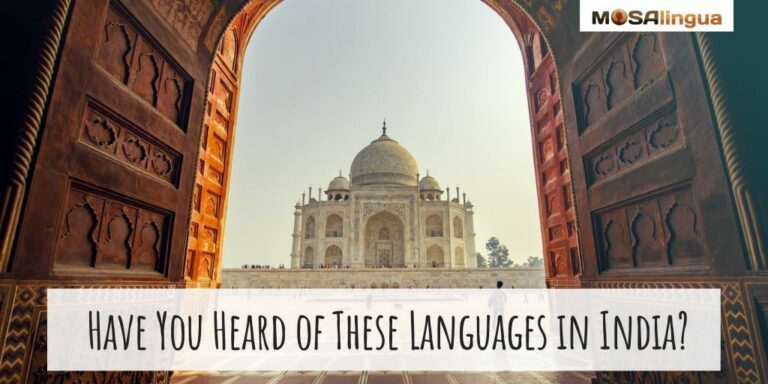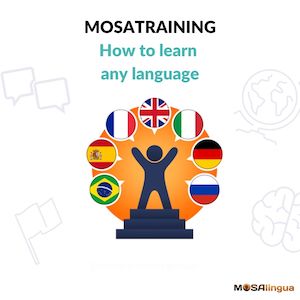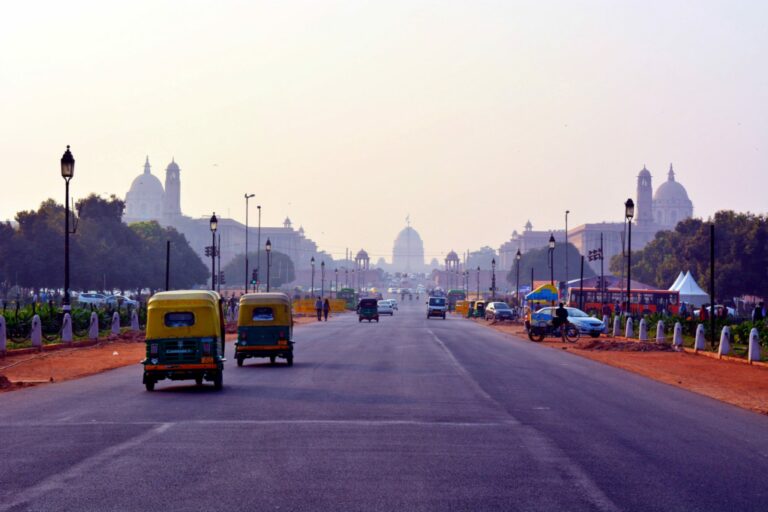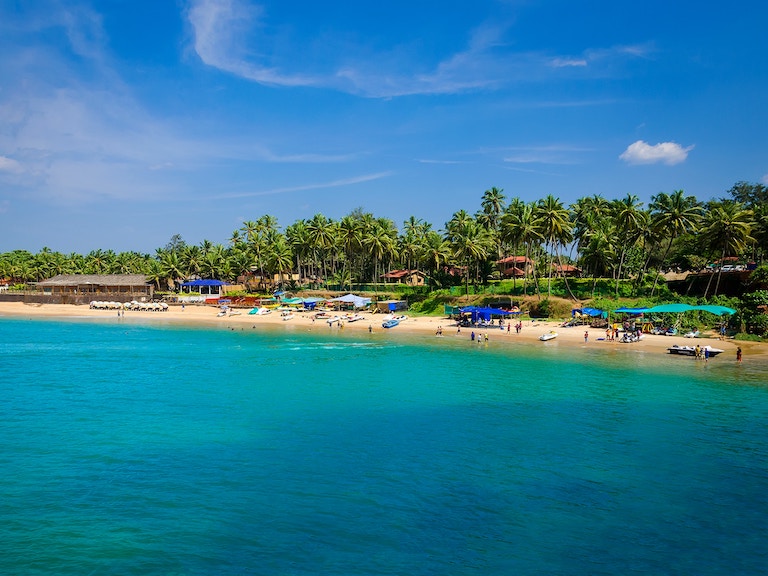You just watched your first Bollywood film, and now you’re trying to sing along to the catchy songs and wondering about the languages in India. India is one of the most inhabited countries in the entire world. It’s home to almost 1.5 billion people and the population continues to climb, putting it well on track to becoming the most populous country on the planet. So it might not surprise you to learn that all those people speak an incredible variety of different languages!

What Language Do They Speak in India? Have You Heard of Them?
Depending on how you classify a language vs. a dialect, people speak hundreds or even thousands of languages in India. It’s a true Tower of Babel! Let’s take a closer look at the many tongues of India.
Most of the languages in India come from two language families: Indo-Aryan languages, spoken mainly in the north of India, and Dravidian languages, spoken mainly in the south.
Indo-Aryan languages derive from an early form of Sanskrit, a language linked to the Hindu religion widely practiced in India. Almost 900 million people around the world speak an Indo-Aryan language.
The Dravidian languages are less widely spoken, with about 250 million speakers mostly concentrated in south India.
How to learn any language

News flash: those people aren’t any smarter than you are, and they don’t have any kind of special gift for language learning, either. It’s all because of the methods they use. Practicing with the latest and most effective techniques, along with a few expert tips, is a recipe for success.
It can work for you, too! MosaTraining combines all of these tips and techniques into one comprehensive, hands-on approach to language learning.
What’s the national language in India?
Surprisingly, there is no national language in India. Since there are so many languages–and cultures–in India, choosing just one language to represent the entire nation would be a difficult task.
However, according to the Constitution of India, there are two official languages: Hindi and English. These are the only languages that can be used for official government business, and two of the main languages in India. But people speak many more languages in India–let’s take a look at them now!
How many languages are spoken in India?
According to the most recent Census of India, there are 121 total languages in India. That makes it one of the most linguistically diverse countries in the world! But if you’re planning a trip to India, how do you know which language you should learn?
Each of the 28 states of India gets to pick one (or more) official state languages. These make up the scheduled languages of India. These scheduled languages receive recognition and support from India’s government. Here’s a list of the 22 scheduled languages, including the population by language in India (mother tongue):
| Language | Speakers |
|---|---|
| Hindi | 528,347,193 |
| Bengali | 97,237,669 |
| Marathi | 83,026,680 |
| Telugu | 81,127,740 |
| Tamil | 69,026,881 |
| Gujarati | 55,492,554 |
| Urdu | 50,772,631 |
| Kannada | 43,706,512 |
| Odia | 37,521,324 |
| Malayalam | 34,838,819 |
| Punjabi | 33,124,726 |
| Assamese | 15,311,351 |
| Maithili | 13,583,464 |
| Santali | 7,368,192 |
| Kashmiri | 6,797,587 |
| Nepali | 2,926,168 |
| Sindhi | 2,772,264 |
| Dogri | 2,596,767 |
| Konkani | 2,256,502 |
| Manipuri | 1,761,079 |
| Bodo | 1,482,929 |
| English* | 259,678 |
| Sanskrit | 24,821 |
*English isn’t a scheduled language, but it is an official language.
Why are there so many languages in India?
People have many theories about India’s linguistic diversity, and it likely comes down to a combination of factors.
India has a very long history, allowing plenty of time for languages to develop and new branches and dialects to form as people migrated to and within the country (not to mention the various invasions and a period of colonization). The size and geography of India also meant that there were different languages developing in different parts of the country. Plus, unlike some other countries, India doesn’t have a centralized body to govern the country’s language(s) or impose a standard. (Think France and its Académie Française.)
Top 5 Languages Spoken in India
Since we can’t look at all 121 languages in depth–we’d be here for days!–we’ll dive into India’s top five most spoken languages.
Hindi/Urdu/Hindustani
Hindustani is the name for a group of Hindi-Urdu languages that are part of the Indo-Aryan language family. Though Hindi and Urdu are considered two separate languages nowadays, the two languages developed alongside one another, and many dialects of both Hindi and Urdu are mutually intelligible.
Back in the 13th century, when Muslim rule was solidifying in India, Hindustani emerged as a form of communication between Hindus, who spoke an early form of Hindi, and Muslims, who spoke Persian, Turkish, and Arabic. You’ll see influences of both cultures in the collection of dialects known as Hindustani. Most of Hindustani’s core vocabulary comes from Sanskrit (another one of the native languages in India), but it has a significant amount of Persian and Arabic loanwords, too. Modern Hindi is more “Sanskritized” than Urdu, and Modern Urdu has evolved to contain more words of Persian origin than Hindi.
The most noticeable difference between Hindi and Urdu is their scripts. Hindi uses a Brahmic script, like most of the other languages of India, while Urdu uses a script derived from Arabic. This means that speakers of the two languages might be able to understand one another perfectly well in a conversation, but if asked to read the other’s language, they would have no idea what was being communicated.
How many people speak Hindi?
Hindi is the most common language in India. Depending on the source you consult, over 600 million people in India speak Hindi, either as a first language or as a secondary one. That makes it the third-most-spoken language in the entire world after English and Chinese!
Where is Hindi spoken?
It’s mostly spoken in the north of India, across an area known as the Hindi belt, named that because–you guessed it–most of its inhabitants consider Hindi their native language. Some people consider Hindi the lingua franca of India, due to its prominence across the entire country. It is often the language of commonality between people who speak two different languages.
Bengali
Bengali is an Indo-Aryan language spoken mainly in the northeast of India, with pockets of speakers along the central east. It is the second-most spoken language in India after Hindi, with 107 million people in India speaking Bengali. Not only is it the second-most-spoken language in India, but it’s also the seventh-most-spoken language in the entire world.
Where is Bengali spoken?
Bengali is the official language of the Indian states of West Bengal and Tripura, and also the Barak Valley region of the state of Assam.
Bengali is also the official language of Bangladesh, an Islamic country bordering India to the east. Although it is the second-most-spoken language in India, Bengali actually has more speakers in Bangladesh, where 99% of people speak it as a first language.
In fact, UNESCO named February 21st International Mother Language Day to honor the Bengali Language Movement. In the 1950s, Bangladeshis under the dominion of the former East Pakistan government fought for the right to use their native language. Their struggle is a reminder of how crucial it is to honor and respect a community’s native languages.
Marathi
Marathi, another Indo-Aryan language spoken widely in India, has nearly 100 million speakers across the country. Spoken in central-west India, Marathi is one of the southernmost Indo-Aryan languages in India. Therefore, nearly every language spoken any further south is a Dravidian language (or from one of the smaller language families represented in India). It is closely related to Hindi, but they’re not mutually intelligible.
Where is Marathi spoken?
Marathi is the official language of the Indian states of Maharashtra and Goa (where you’ll find the beautiful beaches pictured above).
Telugu
Telugu is the most spoken Dravidian language in India with about 94 million speakers across the country. That means that unlike the Indo-Aryan languages we’ve talked about, Telugu did not derive from Sanskrit. Nonspeakers consider Telugu an especially melodic and musical language.
According to data from 2010-2017, Telugu is the fastest-growing language in the United States! Its speakers in the US increased by 86% over that time period. It’s still not very widely spoken in the US, but as more people migrate from the tech capitals of India to work in the US, including from Hyderabad, a Telugu-speaking capital, the language continues to grow there.
Where is Telugu spoken?
Telugu is the official language of the Indian states of Andhra Pradesh and Telangana in the southeast of India.
Tamil
Tamil is a Dravidian language spoken in the very south of India, and it’s the fifth-most-spoken language in the country.
There’s something really cool about Tamil that everyone should know—it is the oldest living language in the world! (And therefore, one of the oldest languages in India, too.) There is proof of Tamil being used as early as the 3rd century BCE, and it’s still going strong today with more than 77 million speakers in India alone.
Tamil is considered a classical language of India, which means that it meets these three criteria: its origins are ancient, it has an independent tradition, and it possesses a considerable body of ancient literature. Tamil actually boasts the oldest continuous literary tradition among the Dravidian languages.
Where is Tamil spoken?
Tamil is the official language of the Indian state of Tamil Nadu, located in the southeasternmost point of the country. It is also an official language in Sri Lanka and Singapore.
What about English in India?
English was brought to India by the British when they colonized the country in the 19th century. It serves as the other official language of India besides Hindi and is an official language in seven Indian states.
But despite its official status, relatively few people in India speak English, especially as a first language. It’s almost universally spoken as a secondary language in India, and even then, only about 10% of the population speaks it. English language education is pretty inaccessible for the majority of Indians, especially those in rural areas. As a result, English is mostly spoken by wealthy, urban, highly educated residents of India, and is more likely to be spoken by men and young people.
English makes up an important part of India’s linguistic landscape. That said, don’t rely on it to get by during your next trip to Kolkata!
Next Steps
The linguistic landscape of India is simply fascinating! Take a trip around the world and explore the languages spoken in some other countries with this series of articles:






Comments